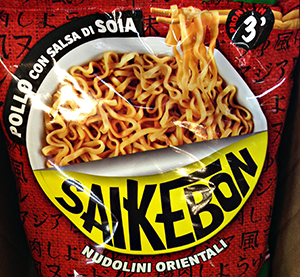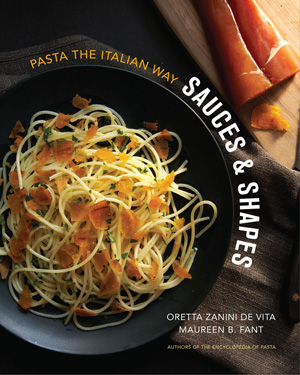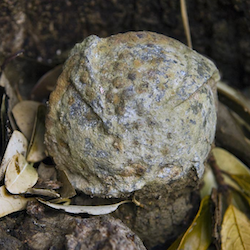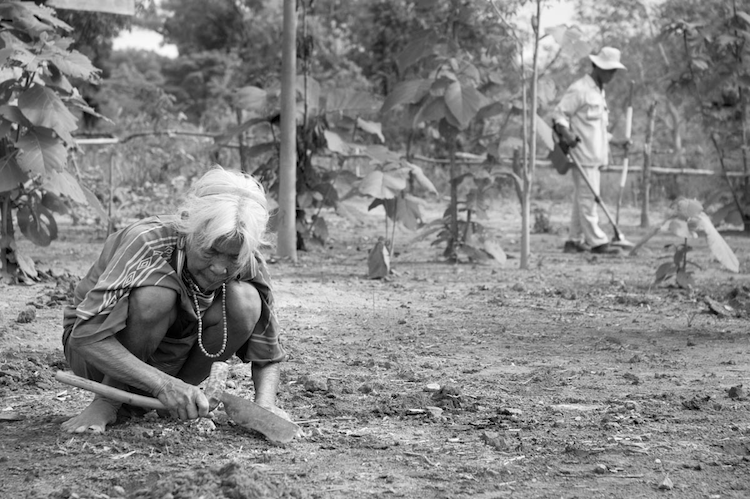We’ll have what they’re having has taken on a whole new meaning
Podcast: Play in new window | Download (Duration: 15:34 — 14.7MB)
Subscribe: Google Podcasts | Spotify | Android | RSS | More
 In a world in which you can get pizza in Tokyo and sushi in Rome, diets have become truly global in reach. You could argue that this has made them more, not less, diverse. Where once rice dominated Asia, wheat, potatoes and corn have made huge inroads: increased diversity. On the other hand, places that used to enjoy their own, local staples – tef in Ethiopia, buckwheat in eastern Europe – have also come under the sway of the global behemoths, and so have lost diversity. Those are two conclusions of a massive data-mining exercise that has rightfully been getting a lot of coverage: Increasing homogeneity in global food supplies and the implications for food security. I spoke to Colin Khoury, the study’s first author, about the increasing dominance of the big crops, the marginalisation of regionally important alternatives, and the sudden rise of a whole set of previously insignificant species.
In a world in which you can get pizza in Tokyo and sushi in Rome, diets have become truly global in reach. You could argue that this has made them more, not less, diverse. Where once rice dominated Asia, wheat, potatoes and corn have made huge inroads: increased diversity. On the other hand, places that used to enjoy their own, local staples – tef in Ethiopia, buckwheat in eastern Europe – have also come under the sway of the global behemoths, and so have lost diversity. Those are two conclusions of a massive data-mining exercise that has rightfully been getting a lot of coverage: Increasing homogeneity in global food supplies and the implications for food security. I spoke to Colin Khoury, the study’s first author, about the increasing dominance of the big crops, the marginalisation of regionally important alternatives, and the sudden rise of a whole set of previously insignificant species.
As we discussed, this new piece of research arose from a desire to provide updated and more accurate answers to the perennial question How many crops feed the world?, originally posed by Robert and Christine Prescott-Allen in 1990. It’s kind of gratifying to note that Colin Khoury first returned to that question in a guest post on one of my other platforms. And we’re still gnawing away at it over there, one way and another.
So, how many crops feed the world anyway?
[I]f you must know, it’s about 94 plant species that largely feed the world. To be more precise, according to the analysis of Colin and his colleagues, we can now say that 50 crops, or 94 species, contribute to 90% of food supplies at national level.
 Sure, you’ve seen Trading Places. But do you know about the history of futures contracts, or why some things are traded on commodities markets and others aren’t? I didn’t, not really. So I spoke to Kara Newman, food writer and author of The Secret Financial Life of Food. One of the things Kara is keen to stress is that where money is involved, there’s always a temptation to cut corners, and her book is full of delicious food-based scandals. One of her favourites is The Great Salad Oil Swindle. If you’ve never heard of it, there’s an interesting reason why.
Sure, you’ve seen Trading Places. But do you know about the history of futures contracts, or why some things are traded on commodities markets and others aren’t? I didn’t, not really. So I spoke to Kara Newman, food writer and author of The Secret Financial Life of Food. One of the things Kara is keen to stress is that where money is involved, there’s always a temptation to cut corners, and her book is full of delicious food-based scandals. One of her favourites is The Great Salad Oil Swindle. If you’ve never heard of it, there’s an interesting reason why. About a month ago I got wind of a conference called Food for Thought: Culture and Cuisine in Russia & Eastern Europe, 1800-present, at the University of Texas at Austin. In some dream world, I would have booked a flight there and then, packed my audio gear, and plunged in. Next best thing, thanks to the kind offices of
About a month ago I got wind of a conference called Food for Thought: Culture and Cuisine in Russia & Eastern Europe, 1800-present, at the University of Texas at Austin. In some dream world, I would have booked a flight there and then, packed my audio gear, and plunged in. Next best thing, thanks to the kind offices of  There’s supposed to be this whole mystique surrounding “proper” pasta: how to cook it, which shape with what sauce, how to eat it, all that. And if you’re not born to it, you’ll never really understand it. Well, maybe not, but with a little effort you can get a whole lot closer to authenticity. Maureen Fant, a writer and scholar who has lived in Rome since 1979, has a new book out with her collaborator Oretta Zanini de Vita, making their Encyclopedia of Pasta a tad more kitchen-friendly. Sauces and Shapes: Pasta the Italian Way is a curious blend of the constrained and the relaxed … just like Italy. One of the things they’re relaxed about is shapes for sauces, which came as a bit of a surprise. One of the things they’re not relaxed about is overcooked pasta, which did not.
There’s supposed to be this whole mystique surrounding “proper” pasta: how to cook it, which shape with what sauce, how to eat it, all that. And if you’re not born to it, you’ll never really understand it. Well, maybe not, but with a little effort you can get a whole lot closer to authenticity. Maureen Fant, a writer and scholar who has lived in Rome since 1979, has a new book out with her collaborator Oretta Zanini de Vita, making their Encyclopedia of Pasta a tad more kitchen-friendly. Sauces and Shapes: Pasta the Italian Way is a curious blend of the constrained and the relaxed … just like Italy. One of the things they’re relaxed about is shapes for sauces, which came as a bit of a surprise. One of the things they’re not relaxed about is overcooked pasta, which did not.
